Peach season is such a wonderful time! And there’s no better way to prepare that delicious fruit than making a classic homemade peach cobbler.
Homemade peach cobbler

Whether you prepare your peach cobbler with canned peaches or fresh ones, this simple dessert is perfect for a summer get-together. And with this quick and easy peach cobbler recipe, you’ll be able to enjoy a slice of fresh cobbler in no time.
This classic dessert is made up of a flavorful filling made with canned peaches and a simple crust, making it a delicious treat any time of year. But the best part about this simple recipe is that you only need a few common ingredients to prepare it!
Other fruit desserts you will love:
- Apple roses in puff pastry
- Banana bread with walnuts
- Strawberry puff pastries
- Raspberry tiramisu
- Blueberry buttermilk cake
- Instant pot peach cobbler
- Virgin Bahama mama slushie
- Pineapple banana split dessert
- Baked pears
And if you’re up for some peach lemonade, here’s a fabulous recipe!
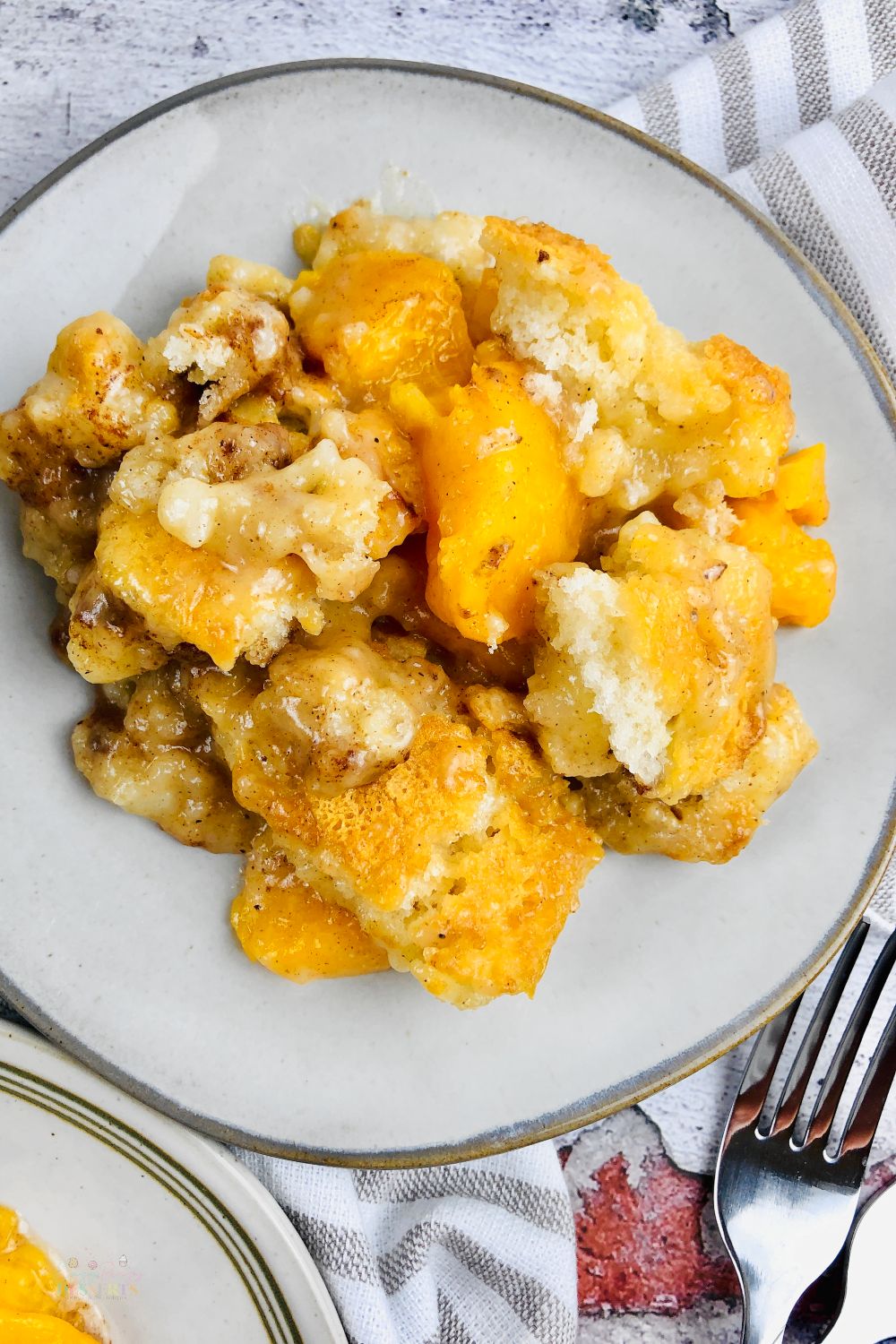
Cobbler Ingredients
I’ll be sharing the details on making your homemade peach cobbler with fresh peaches below. But if you want to make peach cobbler with canned peaches, you’ll need:
- Canned peaches
- Butter
- Flour
- Sugar
- Baking powder
- Salt
- Milk
- Vanilla
- Cinnamon
- Nutmeg
Tips and Tricks
Once you have your ingredients ready to go, it’s time to start baking! With the help of these simple tips and tricks, you can prepare a delicious peach cobbler from scratch with ease.
- Make your cobbler with fresh peaches. While canned peaches can help speed up the preparation process, fresh peaches can easily be used in this recipe. To substitute fresh peaches for the canned variety, peel five peaches and remove the pits. Slice each peach and add it to a saucepan with ¾ cup sugar and ¼ teaspoon salt. Heat until the sugar is dissolved, then add the cooked peaches according to the recipe.
- Give the cobbler time to cool. When you remove your peach cobbler from the oven, you may notice the filling is slightly runny. Instead of returning your dessert back to the oven, give the cobbler time to cool. This resting period will allow the filling time to set up and thicken, giving you a thick and gooey peach filling instead of a runny one.
- Serve with ice cream. After your peach cobbler is finished baking and has had a few minutes to cool. When the dessert is warm to the touch, spoon the mixture into a bowl and top it with a scoop of vanilla ice cream.
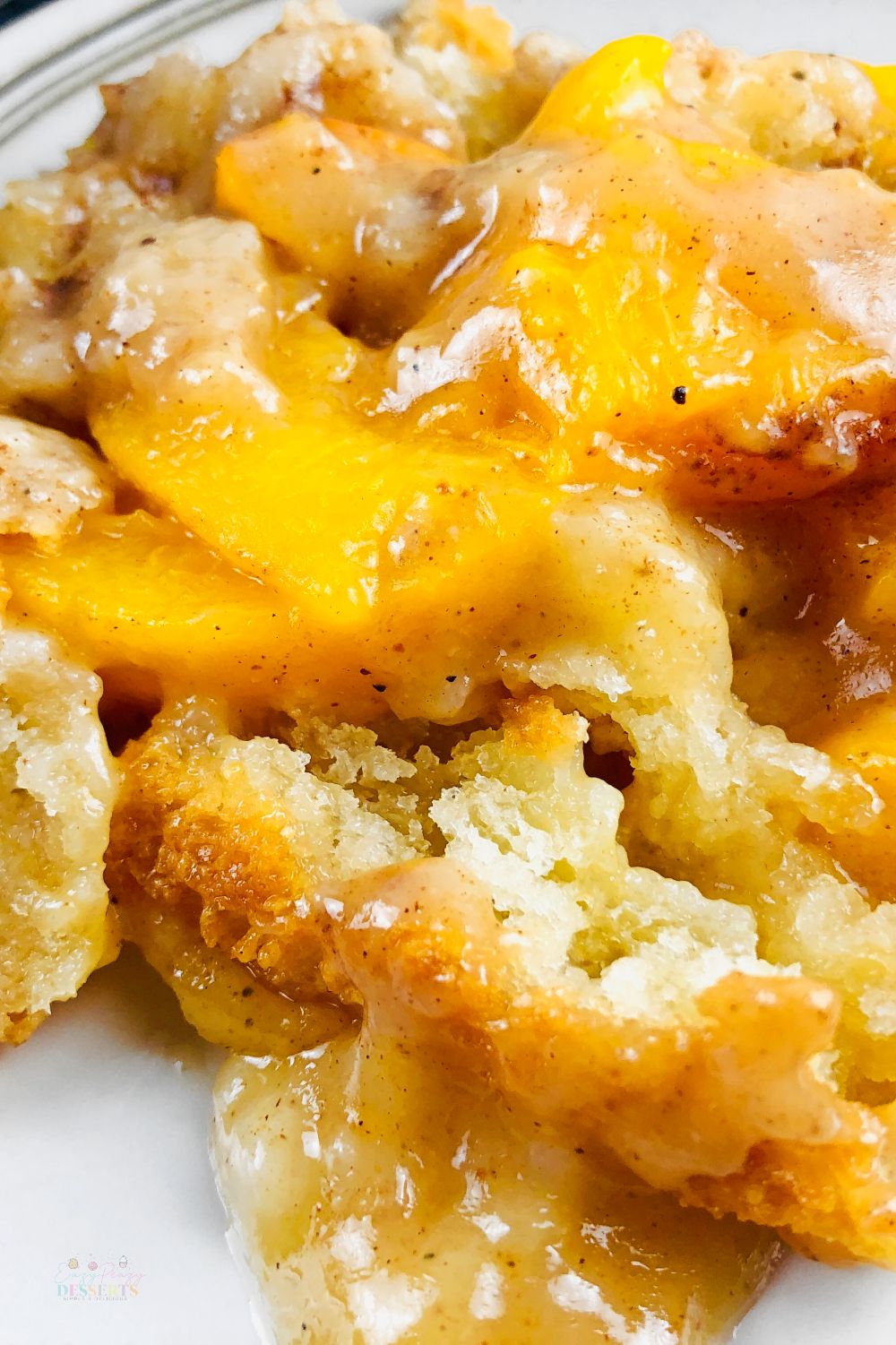
Why Is My Peach Cobbler Runny?
Since peaches are filled with juice, you may run into an issue with your peach cobbler being too moist. If your cobbler looks runny when you take it out of the oven, try letting rest before slicing the dessert. While you should enjoy your cobbler warm, it’s important to make sure your cobbler isn’t too hot when you slice it. Usually, the gooey parts of the cobbler will begin to thicken as it sits, so make sure to give your cobbler plenty of time to cool before you serve it.
Using fresh peaches in your cobbler could cause the dessert to become runny as the peaches cook. To ensure your cobbler doesn’t get too runny, make sure to cook the peaches until the liquid in the pan has reduced. Or add a small amount of cornstarch mixed with equal parts cold water to the pan and stir to mix. The cornstarch will help thicken the peach mixture while it cooks.
How Do You Tell if Peach Cobbler is Done?
Finding the perfect cook time for any dessert can be difficult, but determining when a peach cobbler is done can be especially tricky. Using a toothpick inserted in the center of the dessert is a popular method for checking doneness, but this trick usually won’t work with a cobbler.
Instead, you’ll need to check for signs that the cobbler is done by looking at the dessert. When your cobbler is finished cooking, the filling will be bubbly around the sides of the pan. And the crust on top will be a deep amber color.
You can also use a thermometer to check if your cobbler is done. Insert a meat thermometer into the center of the cobbler. When it’s done, it will reach an internal temperature of 200 degrees.
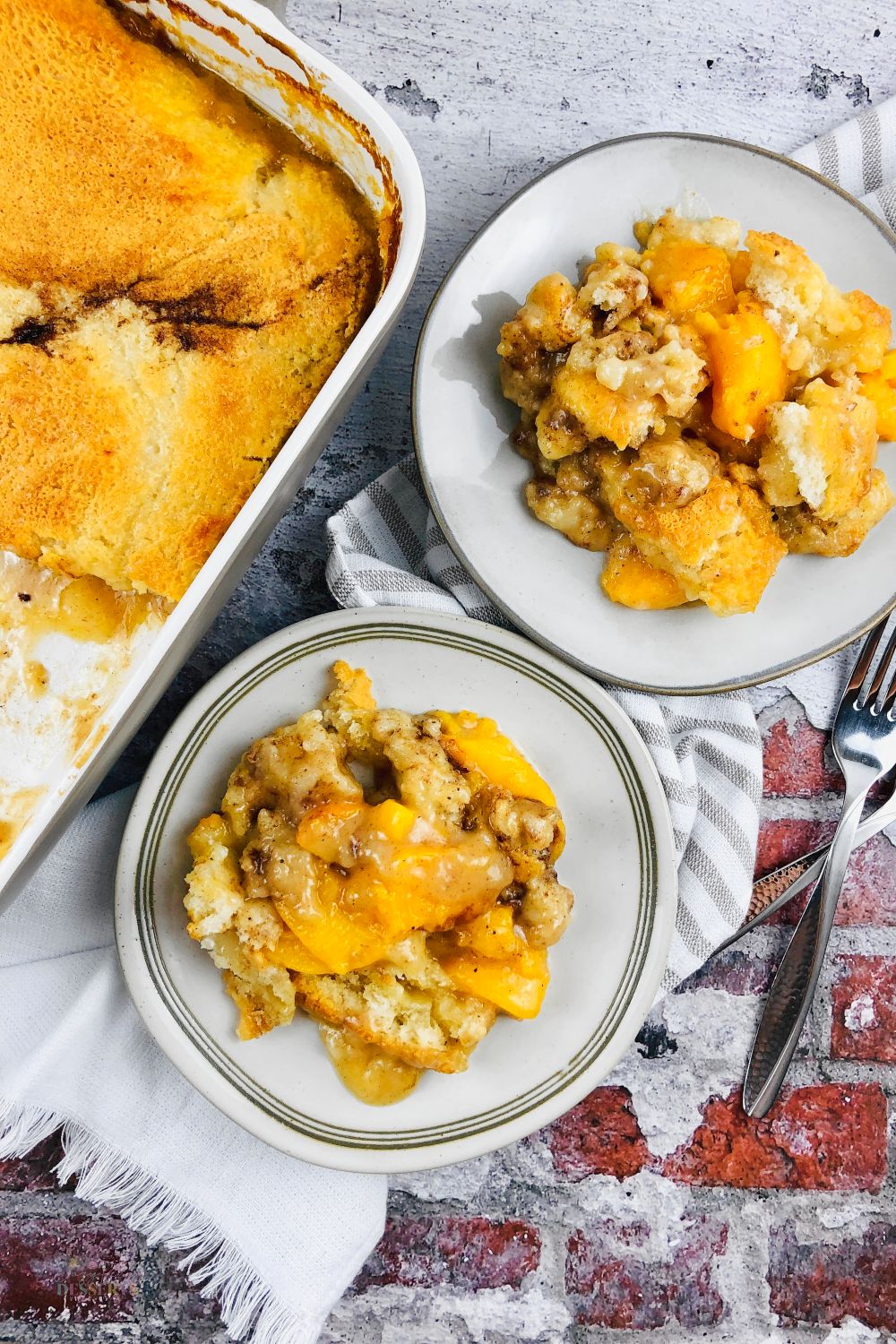
How Do You Store Peach Cobbler?
Since your cobbler is best served warm, the baked dessert can be left at room temperature for a few hours. But after the cobbler has cooled, it’s a good idea to transfer leftovers to the refrigerator. Your peach cobbler can be stored covered or in an airtight container. When stored properly, the dessert can be enjoyed up to one week. When you’re ready to eat a slice of leftover peach cobbler, you can eat it cold or reheat the dessert in the microwave. Heat in 30 second intervals until warmed.
Your peach cobbler can also be frozen and reheated at a later time. Make sure to store your dessert in a freezer-safe dish that is covered to protect it from freezer burn. You can freeze the entire cobbler to reheat later or cut the dessert into individual servings and freeze each serving separately. A frozen cobbler can be kept for up to eight months. When you’re ready to enjoy your cobbler, allow it to thaw completely. Warm a full cobbler in a 350-degree oven until heated through. Or reheat individual slices in the microwave.
Pin to save for later
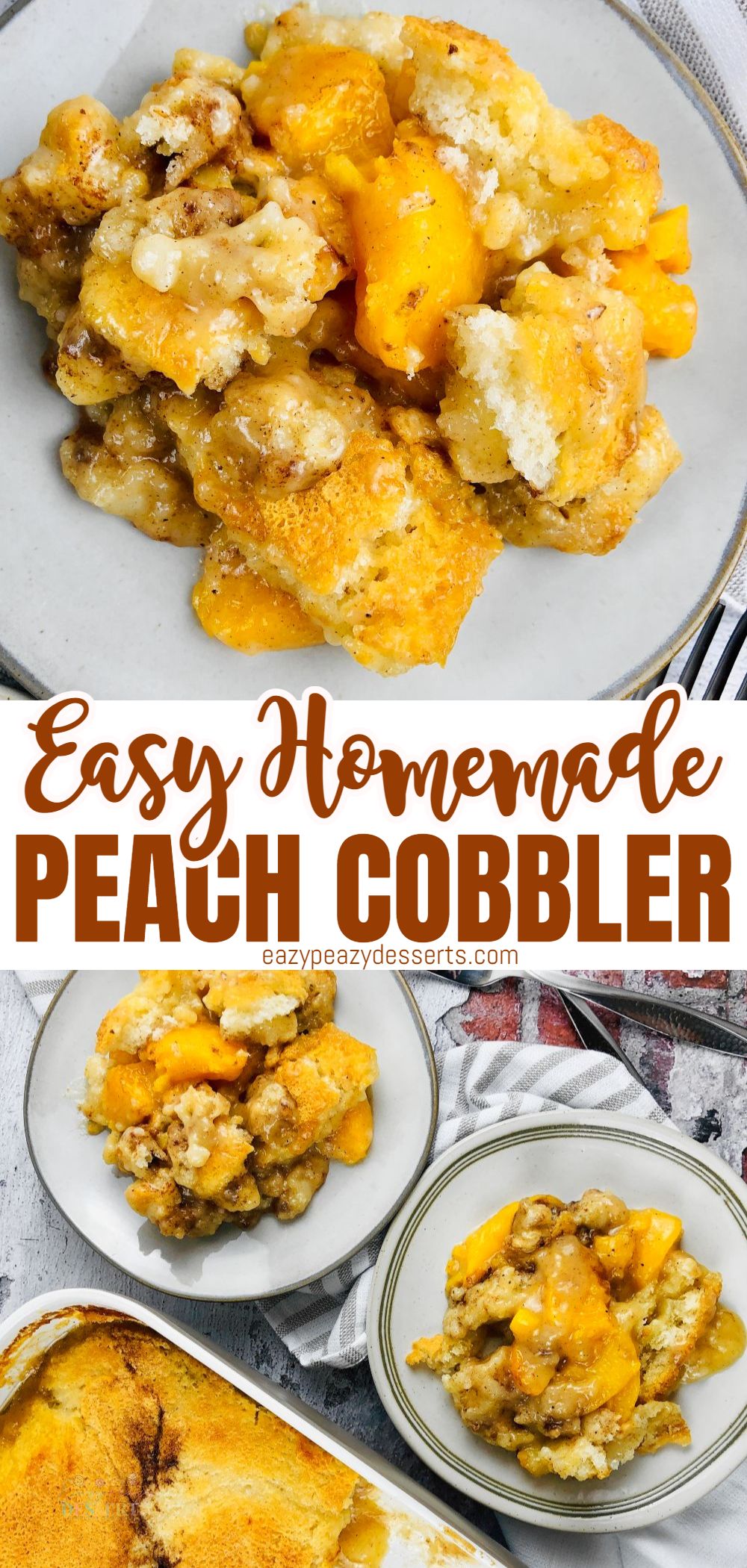
Print the recipe card

Homemade peach cobbler
Equipment
Ingredients
- 20 oz can peaches sliced
For the batter
- 1 stick butter
- 1 cup flour
- 1 cup sugar
- 2 tsp baking powder
- ¼ tsp salt
- ¾ cup milk
- 1 tsp vanilla extract
For the topping
- 3 tsp sugar
- 1 tsp cinnamon
- 1 tsp nutmeg
- Ice cream for serving if desired
Instructions
- Preheat oven to 350 degrees. Place butter in 13x9 baking dish in oven to melt.

- In a large bowl whisk together flour, sugar, baking powder, salt, milk, and vanilla until well combined. Pour over melted butter.

- Spoon in peaches and juice

- For the topping stir together sugar, cinnamon, and nutmeg

- Sprinkle over peaches

- Bake for 30-35 minutes until golden brown and bubbly. Serve warm, with ice cream if desired, and enjoy!

Notes
Peel, core, and slice 5 peaches
¾ cup sugar
¼ teaspoon salt
Add to saucepan and cook on medium heat just until the sugar is dissolved then follow recipe as below
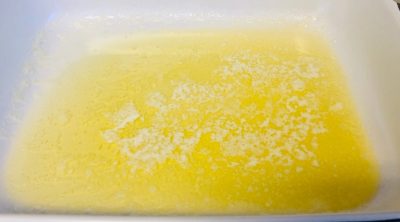


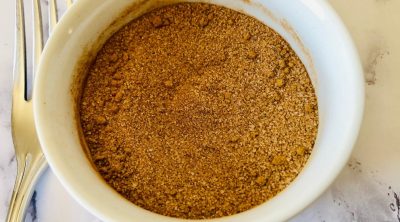
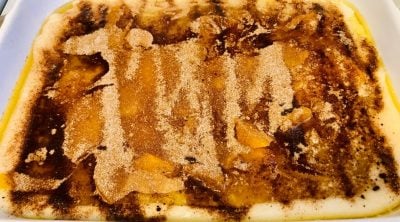
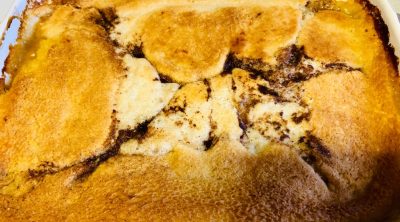
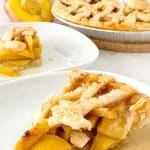




Leave a Reply